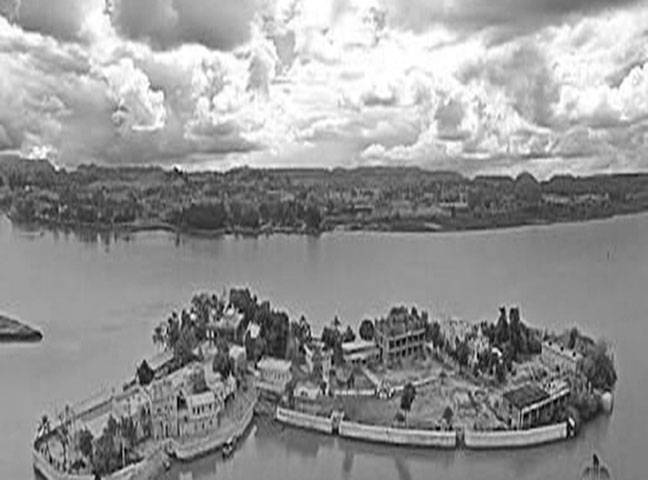“If I had a palace made of pearls,
inlaid with jewels,
scented with musk, saffron and sandalwood,
a sheer delight to behold
seeing this, I might go astray and forget You
and Your Name would not enter into my mind.”
Located in the middle of Indus River, between Rohri and Sukkur, is the sacred island of Sadho Bela known for its complex of nine temples. Founded by Baba Bankhandi, an Uddasi missionary who came from Nepal to settle in Sukkur in 1823, Sadho Bela is a central pilgrimage site for Udasis in Sindh and India. Udasis are the followers of Udasipanth, a religious sect in Sikhism, founded by Sri Chand, the son of Guru Nanik. They are the ascetics who dissociate themselves from the worldly affairs to pray to God. Before the partition, the complex remained a big attraction for people in search of spiritual enlightenment, with the availability of accommodation and food facilitating their stay. Its cells would be filled with monks, ascetics writing, praying. However, with the partition of the sub-continent, many of Sikhs and Hindus had to migrate to India including the Gaddi Nashin, custodian of the complex. As a result, the deserted Island is slowly losing its centuries long charm, reverence, divinity. Pilgrims from India could not attend this year’s annual festival at Sadhu Bela. They were not granted visas due to the escalation of hostilities between India and Pakistan.
The decline of Sadho Bela is reflective of the decline of multiple sacred places, Tilla Jogian, Katas Raj to name few, whose land got shifted from a syncretic subcontinent to an Islamic Pakistan over night as a result of the partition. This decline/shift means we are slowly moving towards a devastating end; Muslim Pakistan, Hindu India. How can we tackle it? Should we tackle it?






